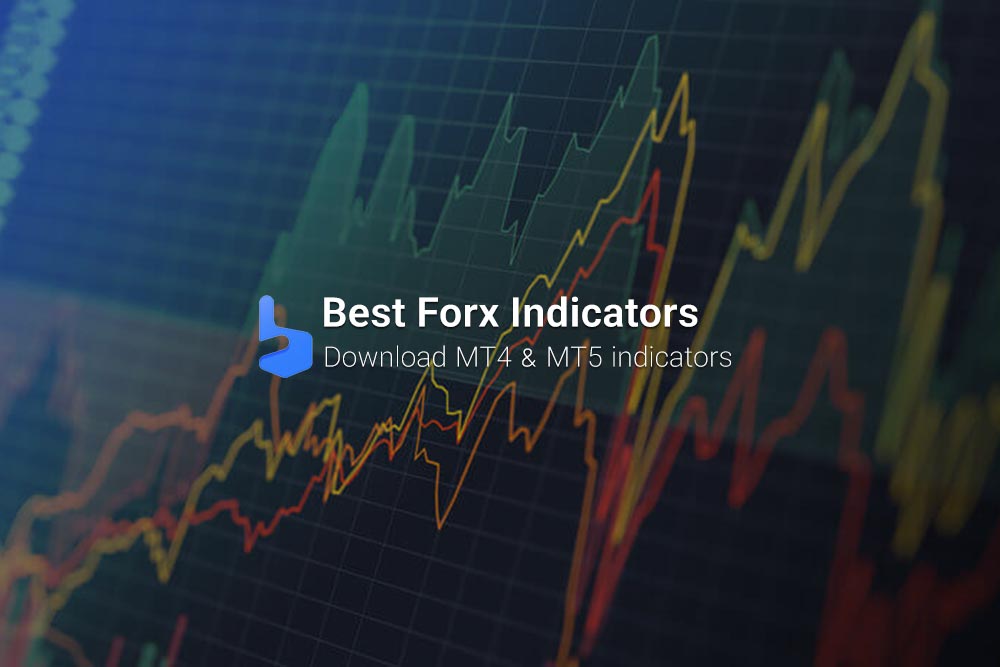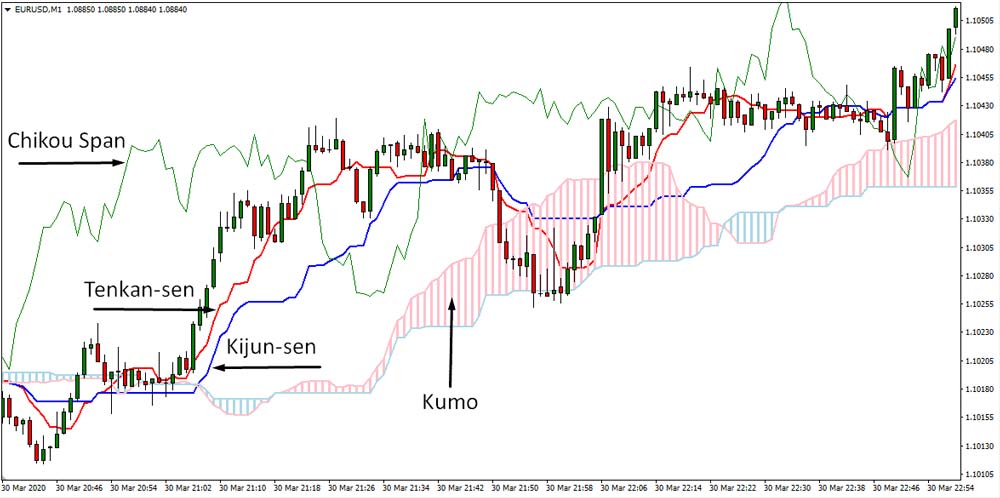What you are about to read:
If you want to become a successful forex trader, understanding and using indicators is crucial. What is the best forex indicator for your investment strategy? Our experts have compiled this guide to teach you about the best forex indicators, how to download them for daily trading, and more.
What is a forex indicator?
An indicator is a mathematical calculation that allows you to analyze a currency pair. This analysis can take into account volume, profit or return, exchange rates, and other factors to help you understand currency movements. These data are often presented in the form of charts to guide your decisions on whether to open buying or selling positions. In other words, forex indicators can provide insight into questions like:
- Which currency pairs should you trade in forex?
- Should you buy or sell forex currency pairs?
- What is your estimated and potential profit from each trade?
In this way, forex indicators can determine your overall trading strategy and improve your trading performance. They can also help you better understand the forex market and provide learning opportunities for you.
Advantages and disadvantages of forex indicators
The advantages of using forex indicators revolve around simplifying the data analysis process by creating clear and concise visuals. This strategy can save you time and energy because you can customize these indicators for better results. These indicators also work for almost all currency pairs, making them relatively versatile.
However, the weakness of relying solely on forex indicators is that they often conflict with each other. This conflict can confuse traders when choosing currency pairs to trade. Additionally, forex signals can sometimes yield unexpected results. Therefore, it is not advisable to rely solely on these signals.
How forex indicators can be useful
But how can a forex indicator help you make decisions to buy or sell assets? The simplest way to understand this is through a straightforward example. As you may know, the moving average is a popular indicator in forex trend analysis. This indicator helps you decide whether the best move for you is to buy or sell a position.
This tool displays moving averages, and the key point is to look for crossovers. That means if the shorter moving average crosses above the longer moving average, it’s a bullish signal. If the crossover occurs with the shorter moving average crossing below the longer one, it’s a bearish signal.
When a forex indicator shows a bullish signal, traders use it as a basis for opening buying positions. Conversely, if the indicators are bearish, traders will look for short selling positions.
Forex indicators can be very useful if used correctly. However, before relying on them, you must make sure you understand the principles and functions of each signal. Each trading technique and style has its own risks, so you should carefully evaluate them when developing your strategy.
Are forex indicators effective?
Another important question is whether forex indicators are effective or not. It’s true that they are not always a guarantee of success, but they can help traders identify significant movements in currency pairs. This assistance can lead to strategic investment decisions and loss reduction.
Choosing the best forex indicators or signals depends on your specific investment goals and time frame. You should establish a consistent method for analyzing signals and using them because they are only relevant during certain market movements and patterns.
Main types of forex indicators
Now that you understand what forex indicators are and how they can assist you in developing your investment strategy, let’s delve into the main types: trend-following indicators, volume indicators, forex oscillators, and moving averages. Each signal is unique and has a standard performance objective. Generally, these four forex indicators are used in combination to enhance your understanding of currency pairs.
Forex trading tools help you automatically calculate price trends and display signals clearly on candlestick charts. So, if you want to use them to improve your trading results, a thorough understanding of the meaning of each forex indicator is essential.
1. Trend Indicators
Trend indicators in forex are exactly what they seem to be – data that can assist you in analyzing market trends and patterns. While they may appear simple at first glance, there are more complexities to these indicators. Therefore, it’s crucial to examine these indicators carefully, as you can be influenced by your own biases.
The most evident forex indicator is recognizing the price trend. This is because the price is the most important variable from which other indicators also derive. Therefore, your first step should be understanding the behavior and trend of an asset’s price. Establishing rules for currency pairs based on price trends can be highly beneficial in strategic decision-making. You can customize these rules according to your personal experience.
For example, a continuous increase in price over several consecutive days may lead you to believe that an upward trend is present. Or reaching a price higher than its 100-day moving average can be useful for identifying an upward trend. These data allow you to generate trading signals, though it’s important to note that completing this task isn’t straightforward.
2. Forex Volume Indicators
If you want a better understanding of the sentiment of other traders regarding a specific currency pair, forex volume indicators can be very revealing. Unlike stock markets where analyzing volume is straightforward, forex markets rely on trading volume indicators. This is because forex doesn’t have a centralized exchange, and trading occurs outside of the stock exchange.
Therefore, you cannot look at the number of contracts or shares traded within a time frame. Instead, you must rely on a forex indicator provided by your broker. This figure represents the volume received by that specific platform.
These numbers can not only help you confirm events occurring in a currency pair but also allow you to confirm a forex breakout. In other words, you can determine whether price trends are stable and secure or if patterns will gradually disintegrate. Forex volume indicators can assist you in answering such questions and indicate buying and selling pressures.
3. Forex Oscillators
Another type of forex signal is known as an oscillator. This unique measure allows investors to find the best entry and exit points for trading or, in other words, when a specific currency pair is overbought or oversold.
In general, a forex oscillator moves between several levels on the price chart and traders use it as a gauge to determine price movements. These indicators can reveal trend exhaustion, market reversal, and expansion, allowing you to decide when to open or close a position.
A common signal in this category is the stochastic oscillator. This is a versatile indicator primarily known for its ability to reveal market signals before they appear on the chart. This indicator compares closing prices within a specific time frame, including the Stochastic line as the main K line and the moving average as the D line.
If the forex indicator exits overbought or oversold regions, it signals that you should exit a position. When the Stochastic line is below the moving average, consider selling. Conversely, if the K line is above the D line, consider buying.
4. Moving Averages
Forex traders use moving averages to understand market movement direction and other fundamental trends. In general, there are numerous ways to calculate moving averages for currency pairs, but the most common method is to take the simple moving average of exchange rates.
You can analyze moving averages in various ways. It doesn’t matter whether you choose a simple, exponential, weighted, or smoothed moving average. The objective is to record a signal that tells you whether to buy or sell an asset.
For instance, a simple moving average forex indicator calculates the average exchange rates within a specific time frame by summing them and dividing by the total number of periods. As you continue the averaging process, you can plot data points. These data points can represent the unique average rate of exchange for a specific currency pair.
If the moving average is lower than the exchange rate, it’s a bullish signal, and traders following this indicator open buying positions. On the other hand, if the moving average rises above the exchange rate, it’s a bearish signal. This can be an indication to consider a selling strategy in the currency pair.
MT4 indicators and how to find them
MT4 stands for MetaTrader 4, which is an online platform used by forex traders. This software was released in 2005, and brokers who offer it are licensed to provide it to their clients. The primary and quadriga forex indicators are usually built directly into the MT platform, but you can also download them from the MetaTrader 4 website.
Similarly, you can search for forex indicators on your broker’s website. Forex trading platforms also offer MT4 indicators because they want their investors to have the necessary tools to predict currency pair movements.
Different MT4 indicators have unique functions and serve different purposes. So, it’s not logical to say that one indicator is better than another, or that a particular signal is the best. Each investor may also use them differently, but all indicators can provide meaningful results. Here are some of the top indicators available in MT4:
- Bollinger Bands
- Moving Average Convergence Divergence (MACD)
- Volume Balance Indicator
- Commodity Channel Index (CCI)
- Density/Distribution Indicator
- Money Flow Index
- Market Facilitation Index
Downloading free forex indicators can be helpful, but keep in mind that not all forex indicators are the same or easy to use. You can find a more detailed explanation of the best indicators for your strategy and use them to improve your results.
How Metatrader Indicators Work:
The best way to understand how forex indicators work is to look at a simple example. The simplest technical forex indicator is trend detection. So let’s use that as an example. This signal measures changes in the value of a currency pair over time and can serve as the primary indicator for price movement.
If you look at a chart and see that the momentum indicator starts rising after forming a trough, you can consider this a buying signal. On the other hand, if you observe a change in trend in the opposite direction, the indicator would look like this:
As shown in the chart below, if the trend detection indicator starts to decline, it indicates a reversal in price movement.
When you see values that are very high or very low on the indicator, it means that the current trend will continue. In the basic market analysis, you will notice that the momentum indicator decreases and then reverses for growth. Going beyond the momentum indicator can also indicate the currency pair approaching its price peak.
It’s true that this indicator is relatively general. However, forex traders combine trend detection indicators with additional research. This was just one example of how you can use a forex indicator to guide your trading strategy.
Summary
In summary, forex indicators are measurements and charts that assist traders in identifying the right time to buy or sell. These indicators also allow traders to determine whether they should buy or sell a currency pair. Additionally, you can use these indicators to analyze volume movements in the forex market or predict the time for a trend continuation or breakout. However, it’s important to note that this analysis relies on patterns and mathematical calculations, so there are no guarantees of success each time.
In simpler terms, using various forex indicators can enhance your trading experience, and you should use them as long as they prove useful. If you don’t intend to trade full-time, you can also use signal providers for automated trading. However, it’s crucial to work with a reliable platform and fully understand the associated risks.




